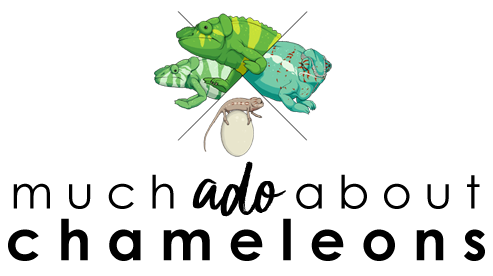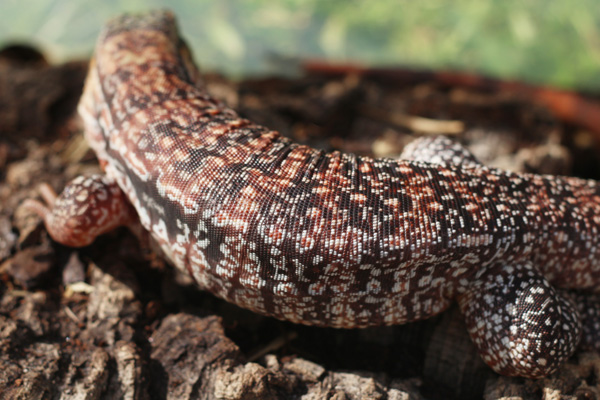I've spoken a lot about feeder variety and the importance of gut-loading (filling feeder insects with good, nutritious food before feeding them off) but I haven't provided a list of good ingredients yet. Below is a list of foods to keep in mind when grocery shopping and others to avoid completely when putting together your own gut-load. You can always mix in high-calcium fresh fruits and veggies with a high-quality commercial dry insect food to provide your feeders with moisture and additional food. But the more fresh food, the better.
Unfortunately, most commercially available foods are very poor in nutritional value, especially products like gel cubes or bran flakes. These are not a suitable gut-load and it can lead to health issues down the line for your chameleon. So look online and research dry gut-load mixes and determine which one is right for you.
Unfortunately, most commercially available foods are very poor in nutritional value, especially products like gel cubes or bran flakes. These are not a suitable gut-load and it can lead to health issues down the line for your chameleon. So look online and research dry gut-load mixes and determine which one is right for you.
As some suggestions, I have personally used Repashy Superload for my insects mixed sometimes with a little Superpig, but other great brands include Cricket Crack, DinoFuel, Repashy Bug Burger, and many more. When you compare the ingredients in these diets to the orange get cubes available as most pet stores, the difference is obvious. These better gut loads even include ingredients considered "super foods" such as spirulina and bee pollen. And remember, the better your gut-load and your feeder variety, the more likely it is that your chameleon will reach his or her best physical potential, and it will be evident in their overall health, their colors, and breeding results.
To understand why we need to use foods that are very low in phosphorous but high in calcium, please consult this previous blog post: Chameleon Physiology & Supplements: Why Different Supplements Matter
We want to avoid foods with oxalic acid because it binds to calcium, magnesium, iron, sodium and potassium and therefore interferes with the absorption of these in the body. Which means that even if you are supplementing with calcium it may not be being utilized properly. And goitrogens are substances that suppress thyroid function.
Best Gut-Loading Ingredients
Food items that are high in calcium but low in phosphorous,
oxalates, and/or goitrogens.
Mustard Greens, Turnip Greens, Collard Greens, Dandelion Leaves, Hibiscus Leaves or Flowers, Mulberry leaves, Grape Leaves, Escarole Lettuce, Squash – either Butternut or Spaghetti, Papaya, Watercress, Alfalfa, Orange, Carrot, Arugula, Basil, Apple, Spirulina, Dried, Seaweed/Kelp, Flax Seeds, Sesame Seeds, Bee Pollen.
Good to OK Gut-Loading Ingredients
Food items that are moderately high in calcium and moderately
low in phosphorous, oxalates, and/or goitrogens
Kale, Sweet Potato, Mango, Green Beans, Blueberries, Strawberries, Zucchini, Whole Bran, Barley, Oats, Wheat Germ, High-Quality Money or Iguana Food (low in animal protein.)
Poor Gut-Loading Ingredients
Avoid these food items completely or use them in extreme
moderation. These items may be too low in calcium, high in phosphorous,
oxalates, and/or goitrogens, or animal fat and protein.
Broccoli, Cabbage, Bok Choy, Spinach, Soy, Apricots, Figs, Kiwi, Asparagus, Dog/Cat/Fish Food, Eggs, Meat, Dead Insects, Vertebrates, Iceberg Lettuce
Broccoli, Cabbage, Bok Choy, Spinach, Soy, Apricots, Figs, Kiwi, Asparagus, Dog/Cat/Fish Food, Eggs, Meat, Dead Insects, Vertebrates, Iceberg Lettuce
Foods to Boost Immune Health
The immune system needs antioxidants, and the three major antioxidant vitamins at Beta Carotene, Vitamin C, and Vitamin E. These are present in the foods below, typically colorful fruits and vegetables (blue, purple, orange, yellow, red) that also correspond to OK, good, or great gut-loading ingredients:
Bee pollen, Cantaloupe, Carrots, Green Peppers, Kale, Mangoes, Turnip Greens, Mustard Greens, Collard Greens, Oranges, Nectarines, Tangerines, Peaches, Pink Grapefruit, Pumpkin, Squash, Sweet Potato, Berries, Apples, Nuts, Watermelon
Foods to Aid with Nerve & Eye Health
For some chameleons, this can be important, especially for chameleons who suffer from issues that affect the nervous system, such as severe calcium deficiencies or vitamin D3 overdoses. The most important vitamins/minerals for nerve health are magnesium, omega 3 fatty acids, b-complex (so any vitamin B), and taurine. For eye health you need vitamin A, which is present in the same sources as fatty acids - animal sources.
Whole Grains and Dark Leafy Greens are high in Magnesium, as is Flax Seed, Almonds, and Brazil Nuts. Dark Leafy Greens are an excellent source of B vitamins as well.
Omega 3 fatty acids are found in foods like fish, but chameleons don't tolerate large amounts of animal protein so extremely moderate doses of something like fish liver oil should be administered to a chameleon.
As you can see, a lot more goes into good nutrition than just feeding your insects some iceberg lettuce and carrots. Remember that the saying "you are what you eat" really is something to remember, as everything that your insects eat goes straight into your chameleons. So if they eat good things, your chameleons will benefit. However, if they eat bad or poor foods your chameleons will not thrive as well, and may get diseases in the long-term, like gout. So remember to avoid foods that are high in animal protein (like cat or dog food) as they can lead to gout, rely heavily on dark leafy greens as significantly better choices over normal lettuce, and to continue to mix it up; rotate through several food items (with or without a commercial gut-load) every other week, for example, so your chameleon can get exposed to as many different vitamins and minerals as possible.
Sources:













How is honey dew melon?
ReplyDeleteHi, yes, honey dew melon is good to mix into your gut load. I'm sure something like feeder roaches would love it, they always go nuts for sweet fruit.
DeleteDo you know anything about using rabbit pellets as a part of the gutloading? I use a brand called BRIT Animals for adult rabbits as thats what my bunnies eat. It contains herbs+alfalfa(61%), grain+lineseed(20%), fruit(12%), vegetables(5%) and vitamins(2%). I heard you can "overdose" in vitamins, what would you say is a max for vitamins in gutloading? Is this food something thats safe to continue with as part gutloading?
ReplyDeleteHi, love the blog. So much useful information in one place.
ReplyDeleteWe recently bought a juvenile Jackson's Chameleon... He's doing well and seems happy enough...
I'd like to know I'm giving him the best nutrition possible so my question is...
What is the best way to feed gut load? I've seen many a video on line blending up multiple ingredients and being offered like that. Or is best to leave bits of these different foods in bug container for them to eat?
Thanks in advance
Thank you!
DeleteEither one of these methods is fine, and you can go back and forth if you want. I might give my bugs a dry commercial gut-load and some slices of fruit, or give them chopped up fruits and veggies, or make my own pure. When you make a pure of several ingredients you know they will eat more types of nutrients at once, so that would be the big benefit.
Ok, thank you so much
DeleteHey Olimpia I got red peppers that I have started feeding them is that okay
ReplyDeleteTo my horn worms is that okay
ReplyDelete